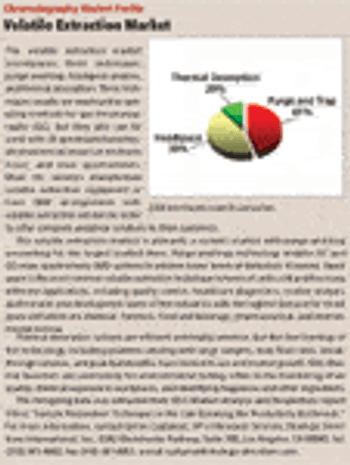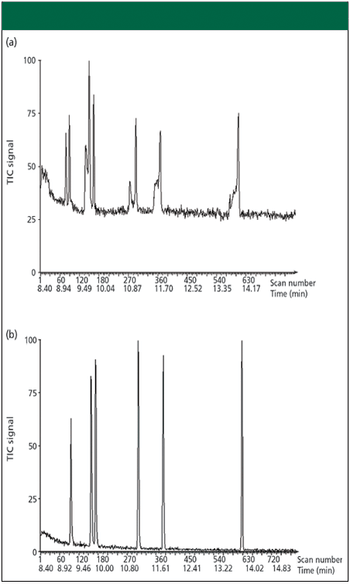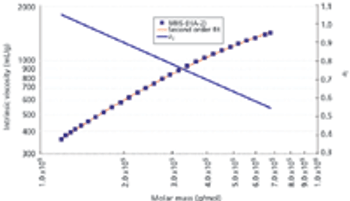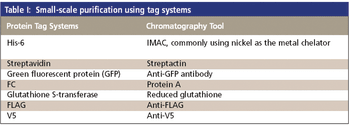
LCGC North America-03-01-2005


LCGC North America
Case studies are good ways to look at specific examples of common liquid chromatography (LC) problems and to draw general conclusions that can be applied to prevent similar problems from happening for other workers. The example in this month's installment of "LC Troubleshooting" comes from a reader who works in the pharmaceutical industry. The sample is a cold-cough syrup analyzed with an ion-pairing LC method. I have disguised the details somewhat to protect the proprietary nature of the method, but there should be sufficient information to help us gain some knowledge of the peak-splitting problem experienced by the user.

LCGC North America
Pittcon 2005 - the 56th Pittsburgh Conference on Analytical Chemistry and Applied Spectroscopy - returned to the Orange County Convention Center, Orlando, Florida, 27 February-4 March 2005. This year's event hosted more than 900 instrument manufacturers and 1aboratory suppliers in more than 2300 booths. In addition to attending the exposition, the conferees were able to listen to numerous oral presentations, view more than 900 posters, check out 38 seminar rooms, or attend one of 150 short courses.

LCGC North America
It is hypothesized that in particular cases, conventional planar chromatography provides a more effective and robust system than column chromatography with regard to separation efficiency and peak distribution of mixtures composed of low-retarded analytes. Under similar reversed-phase experimental conditions, a regular distribution of thin-layer chromatography (TLC) spots of four natural estrogens (estetrol, estriol, 17?-estradiol, and estrone) corresponds to strong irregular dispersion of peaks in chromatograms generated by high performance liquid chromatography. In both cases, the efficiency of separation was assessed using simple optimization criteria such as selectivity (?min) and resolution (Rs min). The distribution of chromatographic spots was evaluated using the relative resolution product (r). The results revealed that an excellent separation of the components of interest could be achieved easily using simple nonforced and isocratic TLC. Such an interesting property of planar chromatography is mainly driven by the nonlinear relationship between k and Rf retention factors. This article also reports the practical advantages of TLC for the separation of estrogenic steroid mixtures at different temperatures.

LCGC North America
The best approach is to document everything for each hardware configuration as a separate method and then qualify and validate them for each sample or category of sample.

LCGC North America
Hyaluronic acid (HA) is a naturally occurring, unbranched polysaccharide that consists of alternately repeating D-glucuronic acid and N-acetylglucosamine units. This biopolymer is present throughout all mammalian systems but occurs primarily in synovial (joint) fluid, vitreous humor, and various loose connective tissues (such as rooster comb) (1). HA is of enormous commercial interest for ophthalmic, medical, pharmacological, and cosmetic applications.

LCGC North America
In this month's installment of "Directions in Discovery," the authors discuss how, with the arrival of combinatorial libraries and high-throughput screening, pharmaceutical firms can develop new models of drug discovery that not only lessen the initial capital outlay involved in drug discovery, but also refine the discovery process.
